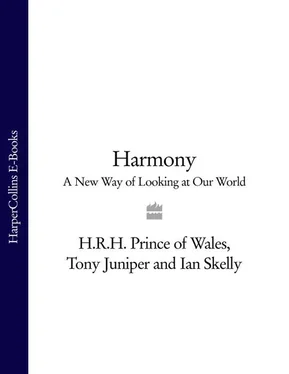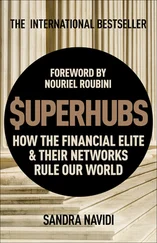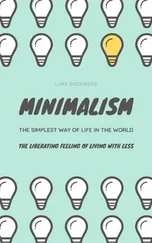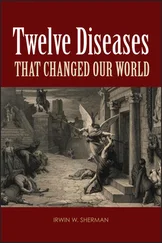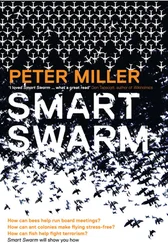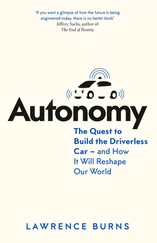If we continue to engineer the extinction of the last remaining indigenous, traditional societies, as is happening in so many countries today (where governments feel embarrassed because they make a country look less ‘modern’), we eliminate one of the last remaining sources of that wisdom. For just as natural species, once lost, cannot be re-created in test tubes, so traditional, socalled ‘perennial’ wisdom, once lost, cannot be reinvented. This is the real damage being done by our disconnection, which is fast becoming all but complete in the modern world, all the while proving that the great experiment to stand apart from the rest of creation has failed.
This is why I have argued for so long that we need to escape the straitjacket of the Modernist world view, so that we can reconnect our collective outlook to those universal principles that underpin the health of the natural world and keep life’s myriad diversity within the limits of Nature’s capacity. In other words, we have to discover once again that in order for humanity to endure alongside the natural world (and the vast, as yet unnumbered creatures with which we share this miraculous planet) on which it so intimately depends for its survival, it is essential to give something back to Nature in return for what we so persistently and all the more arrogantly take from Her. Our approach cannot all be based on ‘rights’. There have to be ‘responsibilities’ too. And my mentioning the word ‘Modernist’ brings me to one more term I need to define before we go any further.
Every time I use this word it provokes a storm of protest. Perhaps it is because, for many, ‘Modernism’ conjures up a certain kind of popular ‘trophy architecture’ associated with, for instance, Le Corbusier, who famously described a house as ‘a machine for living in’. However, the Modernism I am referring to is a much more pervasive doctrine than the eye-catching and clever style of architecture created by a complex figure like Le Corbusier. He was a Modernist, of course. He certainly subscribed to the wider principles of that movement – its devotion to the machine, its love of speed, the rejection of beauty as being innate in things, and the denigration of traditional design and craftsmanship.
What we should remember is that what became an international movement and a far-reaching attitude began as a gross indulgence by the one-time avantgarde. You have only to take a look at Marinetti’s famous Futurist Manifesto, published in Paris in 1909, to see what I mean. Even he called it ‘demented writing’. His language, though, rings with a certain familiarity – for instance, when he calls for ‘the gates of life to be broken down to test the bolts and padlocks’ or when he urges humanity and technology to triumph over Nature. Marinetti did, at least, admit that he wanted to ‘feed the unknown, not from despair, but simply to enrich the unfathomable reservoirs of the Absurd’. But that ambition seems to have been conveniently forgotten as the Modernist ideology tightened its grip.
Marinetti’s historic prospectus was one of the statements that induced the wave of Modernism that would sweep the industrialized world throughout the first half of the twentieth century. Later I will be more specific in my definition of Modernism because its impact on our general outlook has been so pervasive, but for now suffice it to say that this is the movement that still, to my mind, underpins what has become the Establishment view. Modernism deliberately abstracted Nature and glamorized convenience and this is why we have ended up seeing the natural world as some sort of gigantic production system seemingly capable of ever-increasing outputs for our benefit. Modernism compounded what had already become a general attitude in industrialized countries towards the natural world and, as that definition has become more predominant, so the view we have of our own role in Nature’s process has been reduced. We have become semi-detached bystanders, empirically correct spectators, rather than what the ancients understood us to be, which is participants in creation. This ideology was far from benign or just a matter of fashion. The Marxism of the Bolshevik regime totally absorbed, adopted and extended the whole concept of Modernism to create the profoundly soulless, vicious, de-humanized ideology which eventually engineered the coldly calculated death of countless millions of its own citizens as well as entire living traditions, all for the simple reason that the end justified the means in the great ‘historic struggle’ to turn people against their true nature and into ideological, indoctrinated ‘machines’. All this I will explain because the impact of the industrial mindset focussed by Modernism is key to the situation we face today. It is responsible for the loss of a deep experience of the interconnectedness of Nature, severing a meaningful relationship with the world we inhabit.
Making the shift so that we see things in a much more joined-up and deeply anchored way – the way things really are rather than as they appear to be – is the first stage of the Sustainability Revolution. But we must approach the challenge positively, regarding such a revolution as an opportunity rather than as a threat. We will all have to alter our outlook on life, but we could see this as an investment rather than as a tax. It will inevitably require a period of reassessment of our values and priorities and a realignment of approaches. But if it comes about, it must do so through interchange and discussion rather than by imposition or decree. It is my ambition that this book, the film that will follow it, and other initiatives that will accompany both, will help to facilitate that vital cross-cultural and international discussion and exchange.

Manufactured tower blocks rising above Dundee, Scotland, in the late 1960s. These buildings were built quickly to meet a housing need, assembled using a system of concrete panels made on a production line. They lasted just 40 years before they were deemed too old. This is not sustainable architecture in any sense, not least for the people unlucky enough to live there.
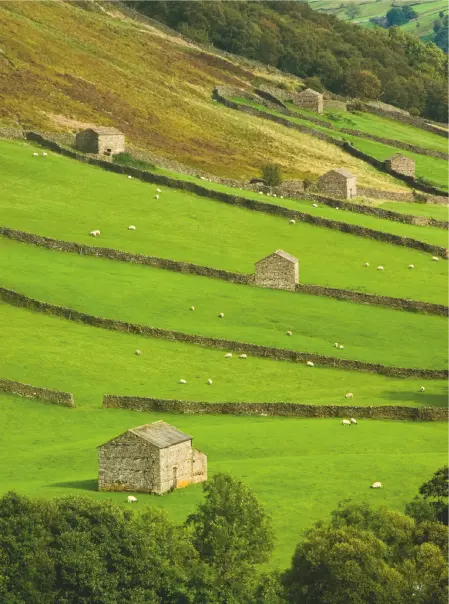
The Yorkshire Dales where the buildings and walls are made from local materials, creating a unique landscape where the Man-made blends with the natural and works best for the harsh conditions found there.
My hope is that I have at least made it clear so far that in the twenty-first century we desperately need an alternative vision that can meet the challenges of the future. It will certainly be a future where food production and its distribution will have to all happen more locally to each other and be less dependent, certainly, on aircraft; where the car will become much more subordinated to the needs of the pedestrian; where our economy will have to operate on a far less generous supply of raw materials and natural resources. But it could also be one where the character of our built environments once more reflects the harmonious, universal principles of which we are an integral part. It could involve a way of teaching our children which offers a much more comprehensive view of reality – one which emphasizes our interconnected reliance on every other part of the whole and living system we call ‘Earth’.
As it is, by continuing to deny ourselves this profound, ancient, intimate relationship with Nature, I fear we are compounding our subconscious sense of alienation and disintegration, which is mirrored in the fragmentation and disruption of harmony we are bringing about in the world around us. At the moment we are disrupting the teeming diversity of life and the ‘ecosystems’ that sustain it – the forests and prairies, the woodland, moorland and fens, the oceans, rivers and streams. And this all adds up to the degree of ‘dis-ease’ we are causing to the intricate balance that regulates the planet’s climate, on which we so intimately depend.
Читать дальше
